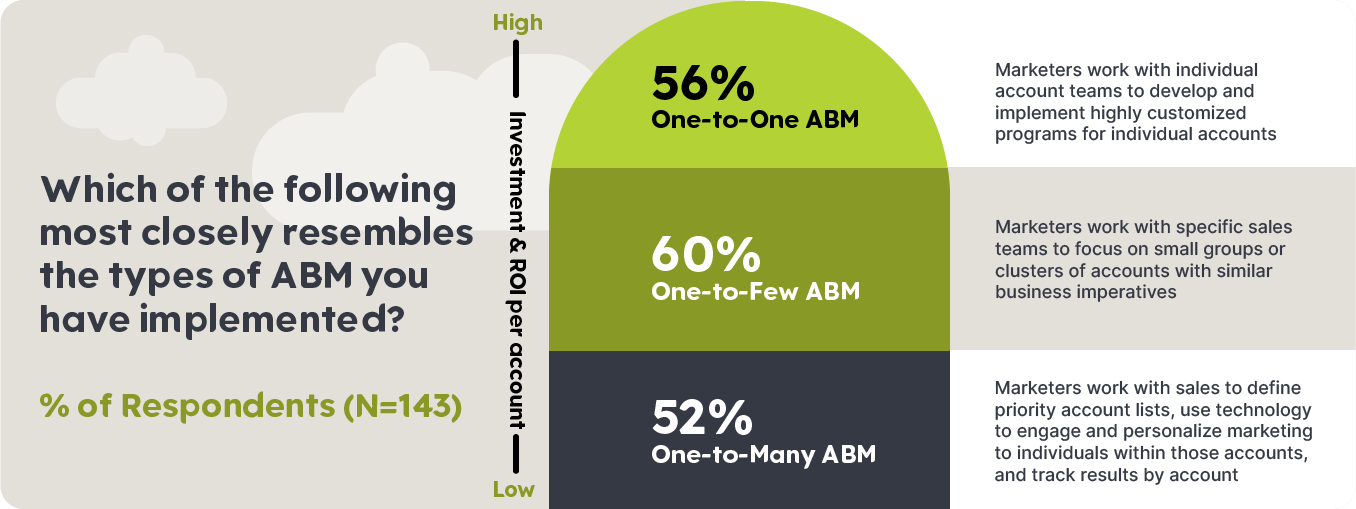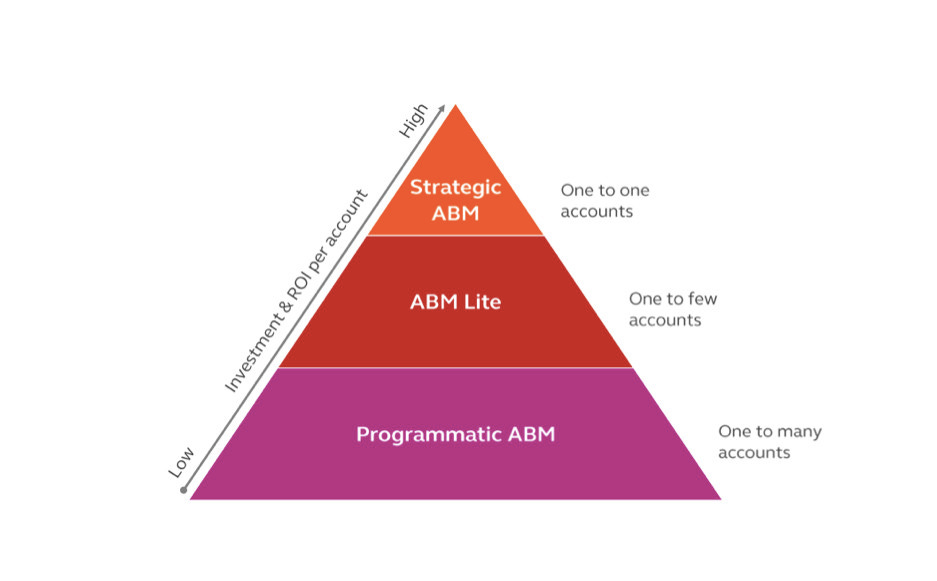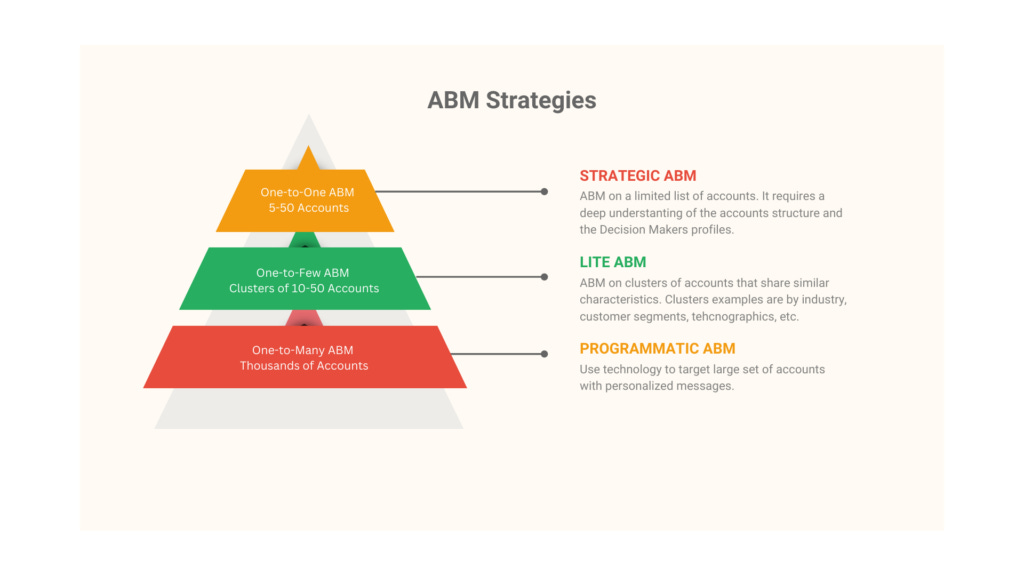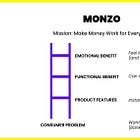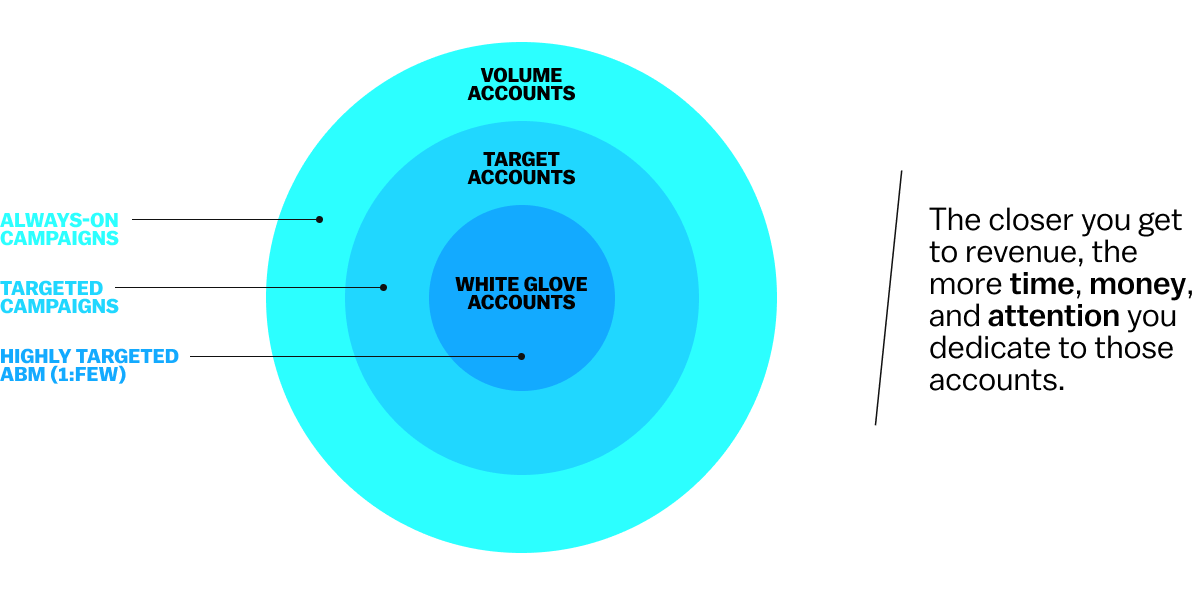514. ABM Playbook 🎰
How to get started with Account-Based Marketing (ABM) - one of my most-requested newsletter topics ever!
Hellooo 👋 So happy to have you here. I’m Kevan. I have spent 15+ years as a head of marketing for some cool tech startups. Now I’ve co-founded a brand storytelling business called Bonfire. We do coaching, advisory, and content. If you identify with creativity and marketing, we’d love for you to join us.
Your ABM Playbook
By popular demand: How to get started with Account-Based Marketing (ABM)

One of the most-requested topics that newsletter readers want to see is Account-Based Marketing (ABM) frameworks and playbooks. So here, finally, are some of my notes, strategies, and highlights about ABM.
My first exposure to ABM came after I left Buffer and went to the world of high-value B2B sales, where everyone was giddy about ABM but no one really had a common understanding of what it meant. Is LinkedIn advertising basically ABM? Sort of. What about creating bespoke magazine covers for limited edition zines featuring CEOs of the companies we most want to have as customers? Um, sure? (This was a real idea we considered.)
ABM runs the gamut, so consider the following advice to be like dipping your toes into the deep end. There’s plenty more to explore, and your ABM experience will be different than everyone else’s.
Hope this info helps get you started!
10 must-knows when starting an ABM program
1 - Get clear on the definition
Account-based marketing (ABM) is a marketing and sales acquisition strategy where you run highly personalized campaigns to attract a discrete set of potential customers.
ABM is a B2B strategy. (So all of you B2C folks feel free to skip this whole newsletter and watch cat videos instead.)
ABM is best applied to mid-market and enterprise accounts because the customer acquisition cost can be high (more on this below).
2 - There are three flavors of ABM: chocolate, vanilla, pistachio. Pick your favorite
The three flavors are:
Strategic
Lite
Programmatic
Many, many graphics have been made to describe this. Thanks to Demandbase, Seismic, and Jabmo for these.
To summarize:
Strategic (1:1 ABM) is scrappy and lean: a marketer working with a sales team to create customized, highly bespoke plans for “markets of one” that derive from a small list of individual accounts.
Lite (1:Few ABM) brings together clusters of five to 15 accounts with similar business challenges / similar industries.
Programmatic (1:Many ABM) is complicated and requires good technology. This is ABM at scale, where you’re applying your personalization principles, programmatically, in order to scale it to hundreds of named accounts.
3 - At its most basic, ABM requires a list of accounts and a personalized outreach strategy to those accounts
Simple as that! (Famous last words.)
4 - How to create a list of accounts
You may already have a list of the types of customers you want to attract through ABM. If you have some strong product marketing foundations, you should already know your Ideal Customer Profile and your key personas. (If not, read the article below.)
Broadly-speaking, you should know who you’re going after. But ABM is all about specifics. What is the specific list of accounts you want? Firmographics won’t be enough. Here are some ways to build your list with more specificity:
Financials: Which potential customers are large enough to generate the right revenue for you?
Product usage: What intent have they shown in using your product?
Marketing interest: What interest have they shown in your marketing materials?
Tech stack: What tools and platforms are they using?
Maturity: What is their current stage of business maturity? Size? Growth trajectory?
Scalability: How large can an account get in the future?
Competitive landscape: Who are your competitors selling to?
And one of my favorite questions, from Hubspot:
Ask, "If we could replicate one deal from last year, what would it be?" Then, use the characteristics of that deal (such as industry, company size, value) to help you find other good-fit customers.
Technology can help you analyze your current audience to see who fits your new criteria and to tag them as ABM options for your list.
IMPORTANT: Don’t just stop at accounts. Accounts aren’t people. You can’t send a personalized email to Apple Incorporated. You need to do your research to identify who within these organizations makes sense to reach out to.
Technology can help here, but so can a manual LinkedIn / data enrichment deep dive.
5 - Examples of personalization outreach
Hero images and headlines segmented by industry (check out Mutiny for web personalization software)
Personal LinkedIn outreach from your founder — actually from someone writing on behalf of a founder, usually
On-page chatbots that use data enrichment to understand the visitor and deliver a personalized message when they arrive
Hosting special dinners and executive summits where only a few people get invited … and they just so happen to all be decision-makers at your target accounts!
There’s also this example from DocuSign: They created unique websites tailored to six separate industries that they wanted to target, then drove target contacts to these websites via display ads. Since DocuSign knew exactly who would visit these specialized websites, it populated the sites with highly personalized content that substantially increased conversions.
And this example from Cognism 🧁🧁🧁:
SDRs sending personalized notes to start a conversation.
Sales reps delivering content and gift boxes to accelerate deals.
Customer success sending cupcakes to leads who were ghosting.
When cupcakes were delivered, response rates were 80%.
6 - Your best ABM tactics will complement your best inbound marketing tactics
Inbound marketing is all the good types of marketing you know and love: creating content that is valuable, being yourself on social media, never interrupting, designing welcoming and wonderful online experiences.
For ABM to thrive, it needs content.
Inbound is great at creating content.
Inbound tends to go very broad, though — campaigns meant for the entire market. In this graphic from Drift, you can see that there’s value in this broad, volume play, but as you get closer to the center, you can refine your approach to a more white-glove experience … using variations of the content from your inbound marketing.
If you have a lot of case study content, you can use case studies as your ABM tactic.
If your execs are spokespeople on social media, you can use social for ABM.
Etc. Etc.
7 - But just in case you want to know allllllllll the ABM tactics, here’s a long list:
Sales rep outreach
Paid media: Social, search, display
Organic social
Website personalization
Social selling
Direct mail
Email marketing
In-person events: Sponsorship
In-person events: Speaking
Intimate events — dinners, meetups, summits, roundtables
Digital events
On-page chatbots
Retargeting
Thought leadership: reports, white papers, bylines
8 - It is a marketing and sales strategy. Work together toward these goals:
Sales velocity — sales cycle length
Influenced pipeline — the dollar value for the accounts that have received your ABM outreach and converted into pipeline
Target account coverage — How much of your target list have you reached
Target account engagement — How much of your target list has engaged with you
Customer acquisition cost
Customer lifetime value
9 - The right ABM approach will depend on your level of maturity and commitment.
If you remember from earlier, there are three flavors of ABM: Strategic, Lite, and Programmatic. Your choice for which one to start with will depend a lot on some of the following factors:
Early-stage business, small marketing team, never done it before: Strategic
Clear segments of high value customers, marketing resources to spare: Lite
Strong inbound marketing, solid technology stack, commitment to ABM: Programmatic
10 - But wait, ABM is super expensive! says everyone.
Not always.
This has been the excuse several times when ABM has been proposed and rejected at companies where I’ve worked. Programmatic ABM is absolutely expensive. You need to have super high ACV (think: $25,000 and up) for programmatic to be a consideration.
But choosing to dip your toes in with an experiment in Strategic ABM does not need to be expensive. You can be lean with building a list of a few dozen accounts and a discrete list of channels, ideally channels that you’re already using for inbound and outbound.
Helpful additional reading:
The Ultimate Guide to Account-Based Marketing from Hubspot
Everything You Need to Know About Account-Based Marketing and How the Best Marketing in B2B Is Done from Demandbase
Account-Based Marketing (ABM) from Drift
Your Guide to Account-Based Marketing from Adobe
The ABM tech stack
Typically, you’ll need tools for (1) building prospect lists and (2) executing ABM campaigns. But you can also find (3) all-in-one solutions that can do both.
All-in-one tools
Demandbase
Marketo Engage
Apollo
6Sense
Prospect list-building
LinkedIn
Leadfeeder
LeadGenius
Rollworks
Zoominfo Marketing OS
ABM campaigns
Hubspot
Terminus
Groove
Seismic
Uberflip
For those of you with paid subscriptions to this newsletter, I’ve included a couple additional resources below. If you’d like to start a paid subscription, you can sign up monthly or yearly to start a membership — and hopefully expense it with your workplace!


